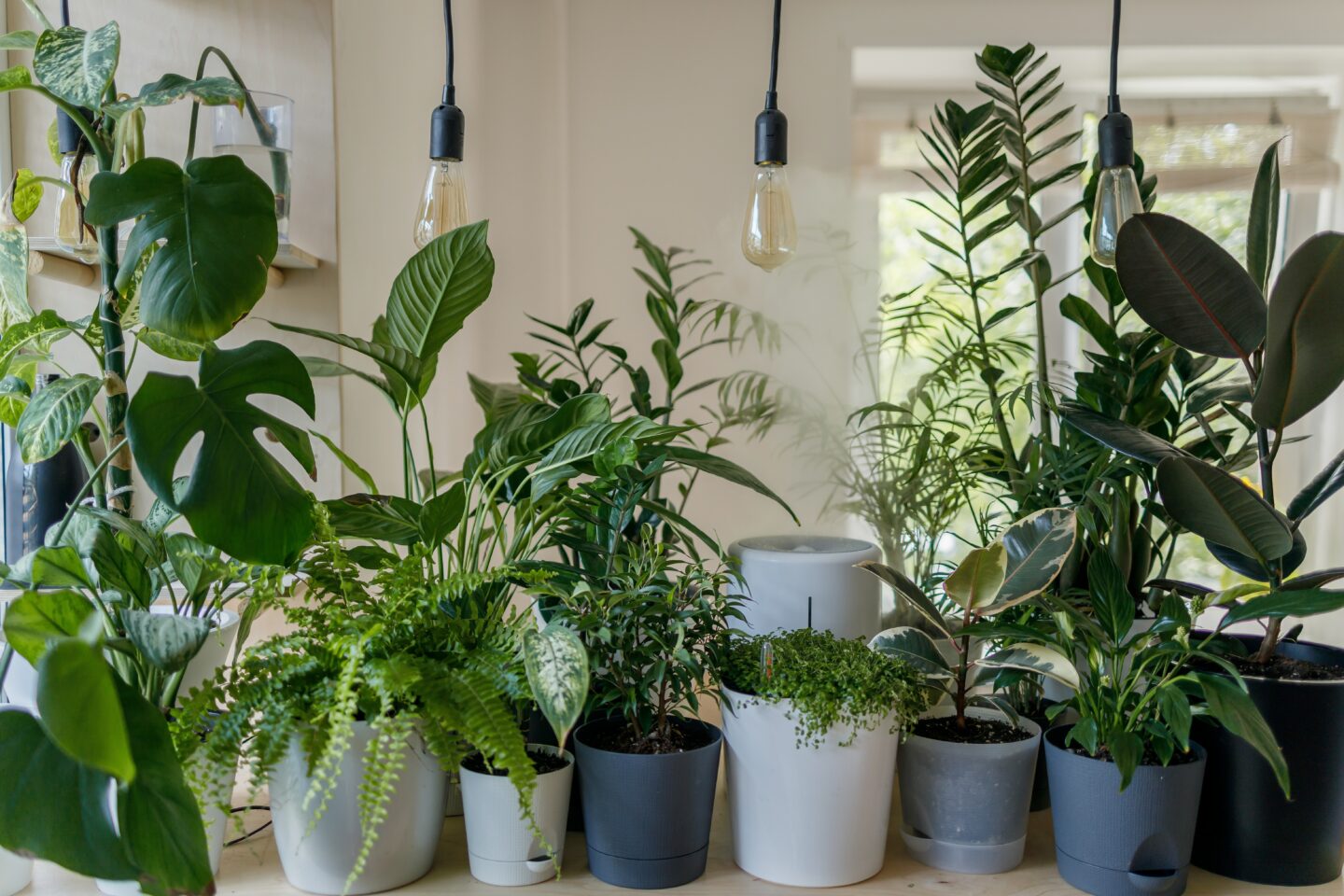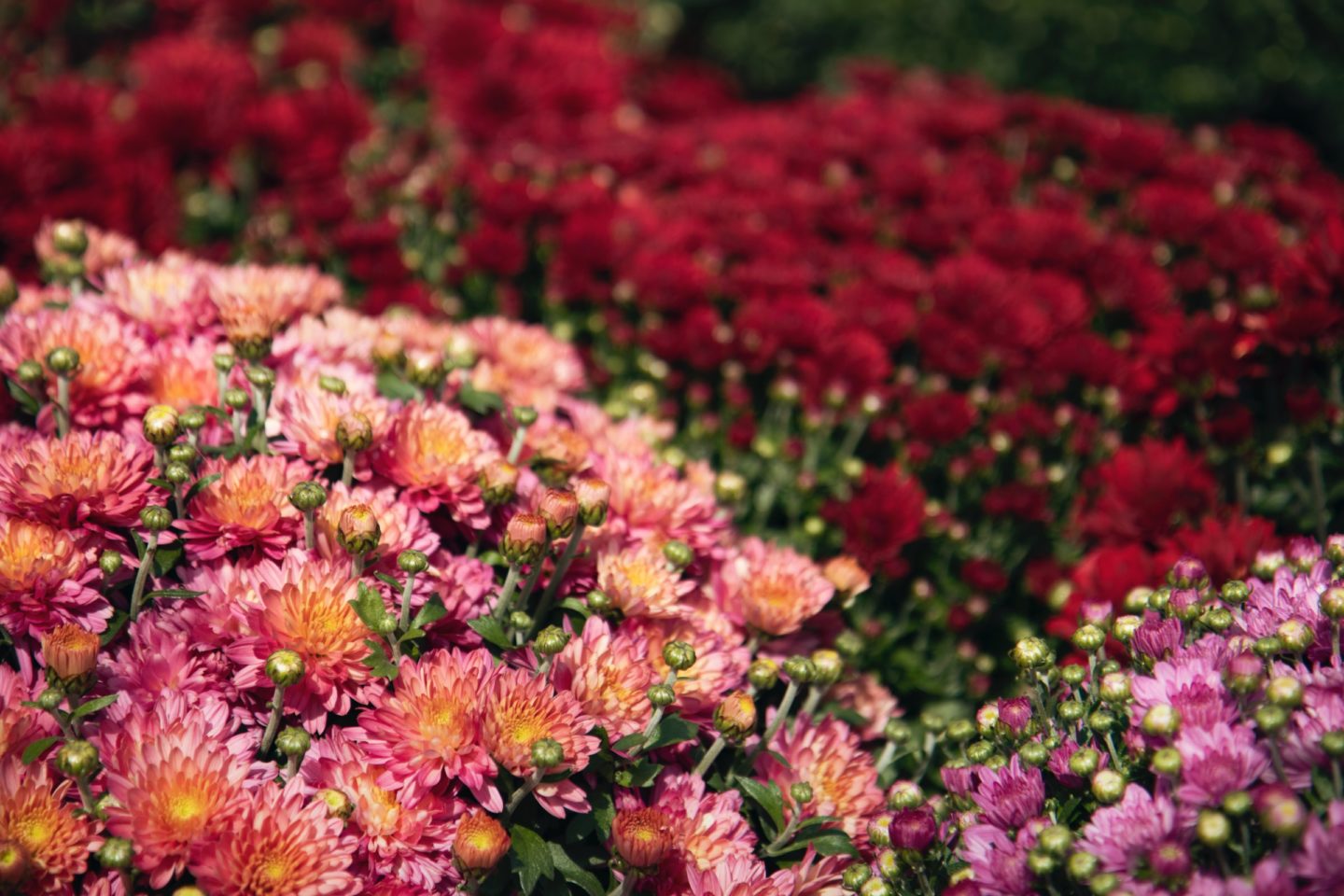With many people getting more and more interested in growing their own food, kitchen gardens have become extremely popular in recent years. But what exactly is a kitchen garden and how can you create one in your backyard? The good news is you don’t need a lot of space (or money) to create a kitchen garden this season. We’ll give you some of our favorite tips on planning, planting, and growing a kitchen garden that will be productive and beautiful all season long.
What Is A Kitchen Garden?
Kitchen gardens, also known as potager gardens, have been extremely popular in France for hundreds of years. But how do they differ from a regular garden? Kitchen gardens are usually located — you guessed it — right outside the kitchen and are easily accessible for a quick trip to cut herbs or harvest before making a meal. For this reason, they are typically grown in containers or raised beds adjacent to patios or other outdoor spaces. For those in apartments or small spaces, a kitchen garden can mean fresh herbs planted in a window box or several large pots filled with vegetables right outside your door. I have a large vegetable garden somewhat far from my home, so I like to do two large whiskey barrels right outside my screen porch with things I use often like cherry tomatoes, basil, parsley, and mint. This is convenient if I need fresh herbs or a few tomatoes for a salad and don’t want to trudge out to the big garden to harvest.
A kitchen garden is meant to be productive but also aesthetically pleasing, which means you can have a lot of fun with container choice, complimentary flowers, and the composition of your plants. The possibilities are endless!
Planning A Kitchen Garden
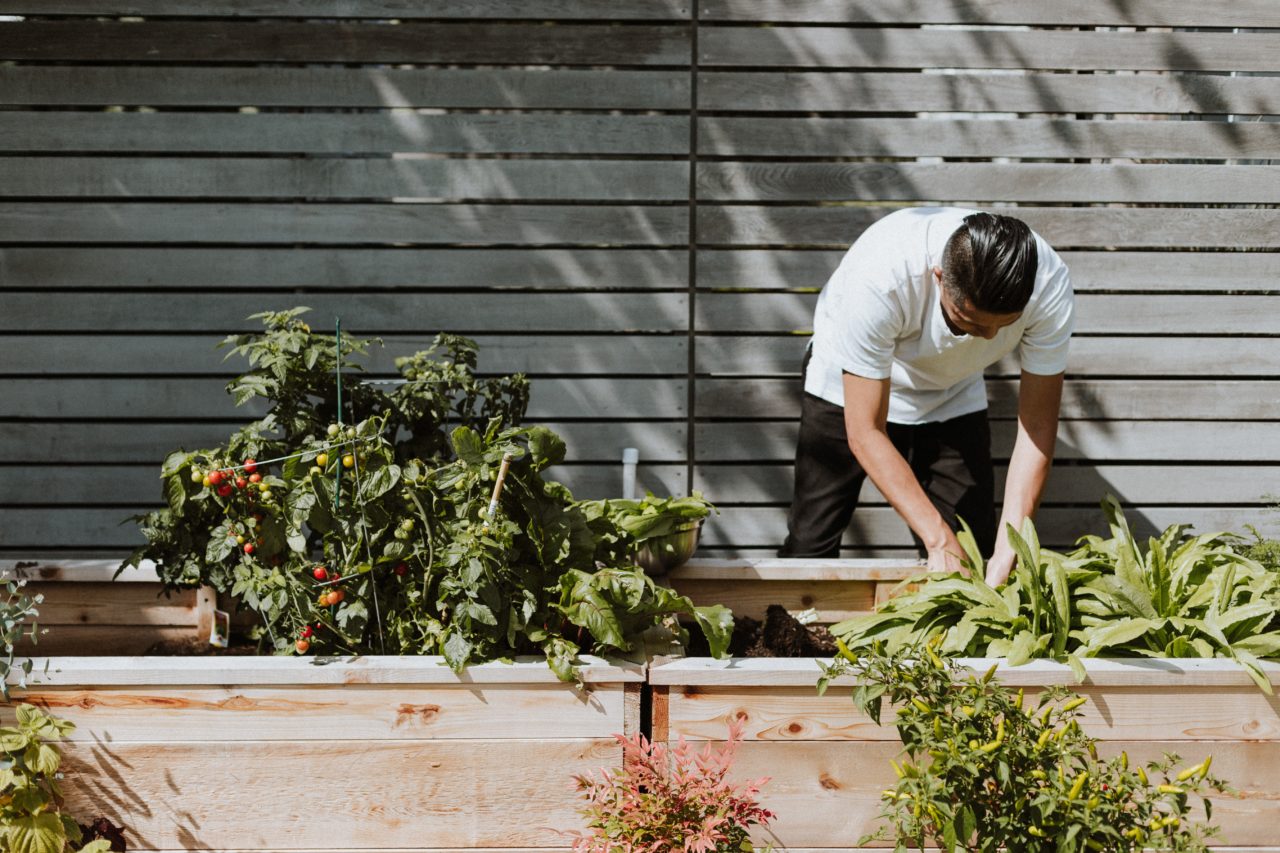
Light. When planning your kitchen garden, the first step is thinking about sunlight. Most vegetables and herbs prefer full sun, so you’ll want to choose an area that gets as much sunlight as possible.
Containers. The next step is choosing your containers. Kitchen gardens can be any size, but many who have the space opt for raised beds (which help with drainage and allow for the use of really good soil). If you have a smaller space, you can use any large pot with good drainage holes or fabric grow bags (which are nice because they can be stored flat for the winter).
Plants. You’ll want to think about which vegetables you use most in the summer months. This is especially important if you’re working with a smaller space and can only plant a few varieties. Do you love fresh basil on pasta or pizzas, or is fresh lettuce for a salad the most important thing for you? Depending on the space you have, you’ll want to prioritize your favorite fresh vegetables and herbs for this garden. The good news is there are tons of dwarf varieties of almost any vegetable, so even if you have limited room or are growing in containers, you should be able to grow just about anything.
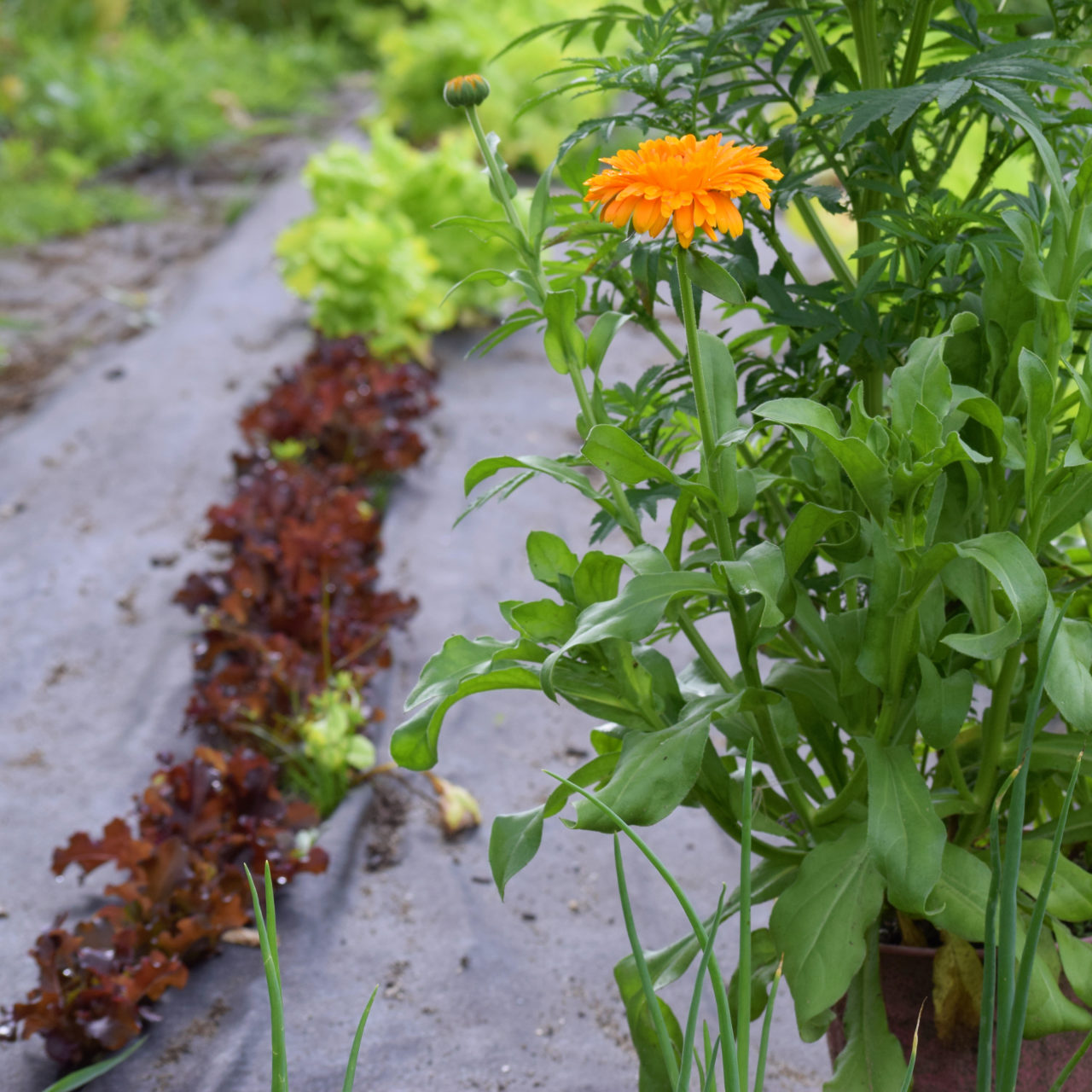
A Few Kitchen Garden Favorites:
- Herbs (Basil, Thyme, Parsley, Mint, Cilantro)
- Cherry or other dwarf Tomato varieties that won’t take up a ton of space and grow too tall
- Jalapeno peppers
- Sugar snap peas
- Lettuce
- Kale
- Radishes
- Dwarf strawberries
Flowers. If you have a little extra space for companion plants, try adding in flowers that help attract beneficial pollinators and deter pests that can eat away at your plants.
- Calendula is a great barrier plant, meaning you should plant it on the border of your garden to help deter beetles and tomato hornworms which can wreak havoc on your precious plants.
- Lavender is one of my favorites for the kitchen garden. It offers up an amazing fragrance right outside your home and helps repel critters and ticks. It can also be dried and used for teas or cocktails!
- Marigolds are another must for the kitchen garden. They help keep squash bugs, tomato hornworms, whiteflies, and thrips away from your plants and have a fiery color palette that will stand out among your veggies.
- Nasturtiums are a smart addition to the kitchen garden because they are edible! The flowers make for gorgeous additions to salads, cakes, and anything else you want to add a little color to.
You can find dwarf varieties of all of these flowers to help minimize their real estate, but you’ll be happy to add at least one of these flowers to your outdoor kitchen garden.
Planting A Kitchen Garden
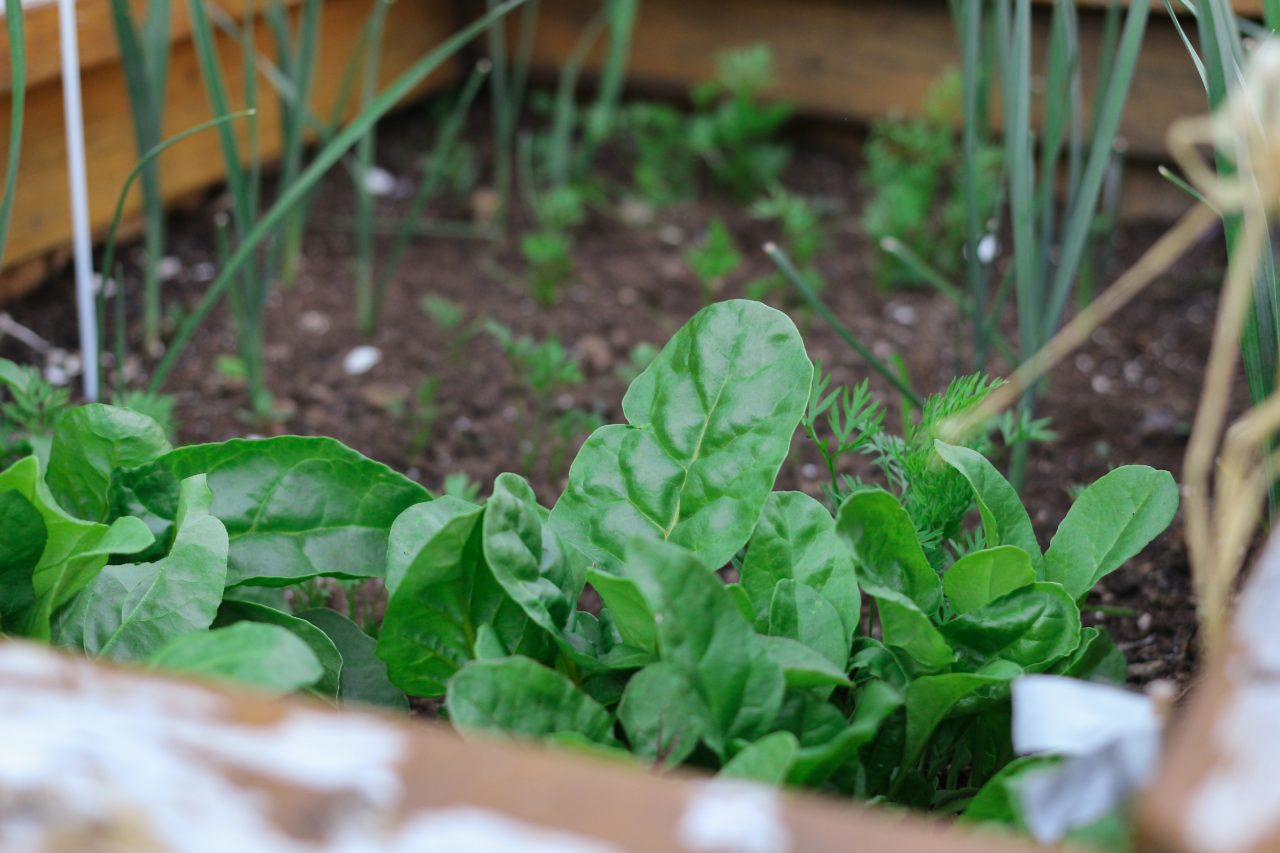
Depending on where you’re located and what type of space you have, you can either purchase plants from your local nursery to plant in your kitchen garden or you can start your garden from seed.
If purchasing plugs from the nursery, most varieties should be planted about two weeks after your area has received the last frost. You can find your last frost date from the Farmer’s Almanac here. Cold-hardy varieties like spinach, lettuce, and radishes can be direct-sown from seed into the garden a few weeks before your last frost date. Consult the packaging on either your plant or seeds to determine when to set them out for the season.
If you want to save some money and have the time to care for seedlings, you can start your tomatoes, cucumbers, herbs, and flowers indoors. Things like peas, lettuce, and radishes can be directly sown into the garden by seed.
Seed Starting Basics
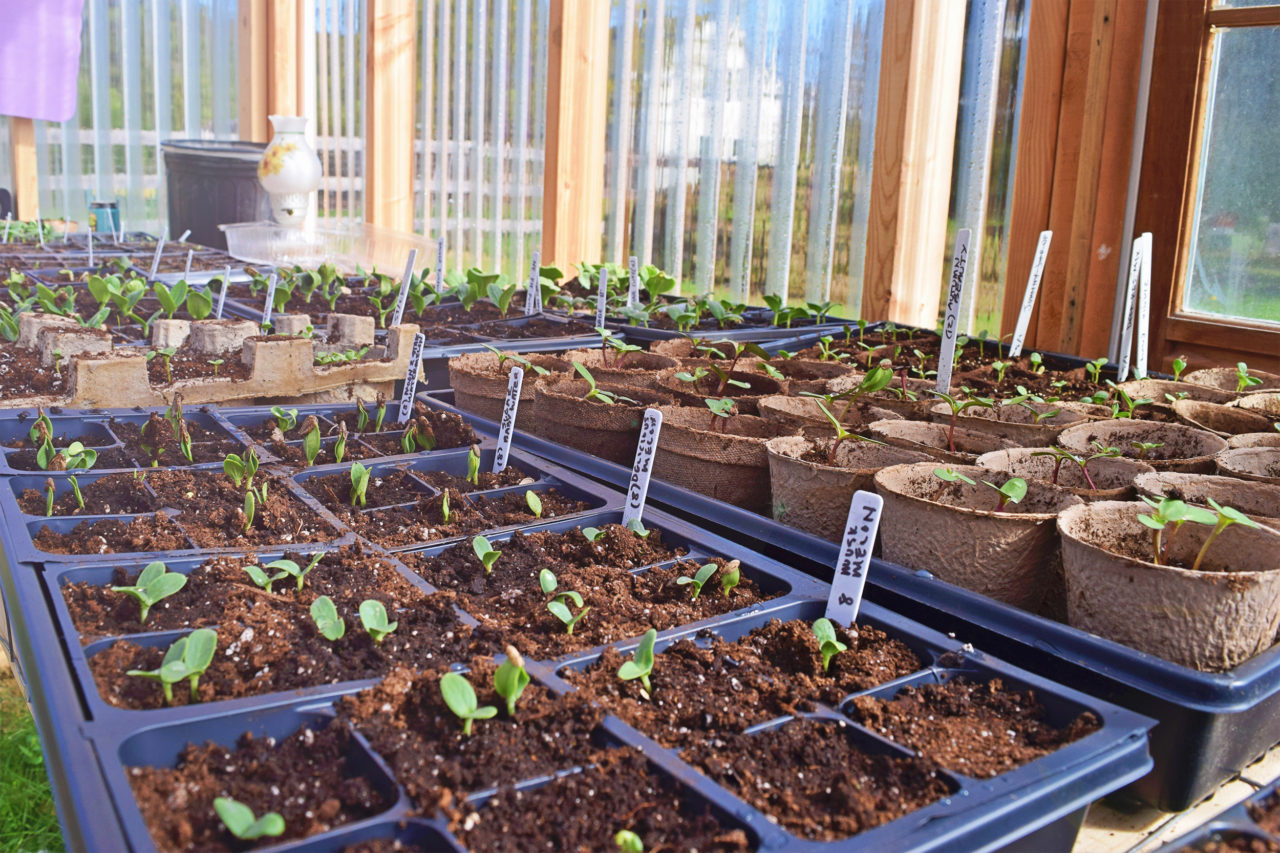
To get started, you’ll need some sort of container for the seeds that have good drainage (egg cartons, yogurt containers, plastic flats, peat pots), a seed starting soil mix, a plastic dome or saran-wrap for covering the containers, a source of light, and some sort of labeling system. Many gardeners can get overwhelmed with buying all of the right tools for seed starting but it’s really quite simple and can usually be done inexpensively with things you already have.
Start your seeds according to the timeline on the packet and your last frost date. For germination, you’ll want to make sure to water the containers from the bottom (a baking tray or nursery tray works great for this), and cover the containers with either your plastic dome or saran-wrap. Provide a source of bottom heat from a heating mat or even the top of the refrigerator or radiator will work! Once the seeds germinate, you’ll want to remove the plastic wrap or dome and give them plenty of TLC. This means water daily with a spray bottle and make sure to give them plenty of light and warmth. A sunny windowsill may work, but many gardeners use fluorescent lights to help supplement (inexpensive shop lights work great). Place a fan on low aimed at your seedlings to help them grow stronger roots and stems while also providing protection from disease. About a week before it’s time to plant them outdoors, start the hardening off process by bringing them outdoors for an hour or so the first day, slowly increasing the time day by day to help the plants acclimate to the outdoors and prevent shock. This is an extremely important step!
Whether you’re planting your newly-grown seedlings or plugs from the nursery, make sure to look at the spacing on the tag and give your plants some breathing room. If they need support (like tomatoes or peas) add this early so the plants have something to grow up from the start.
Maintaining A Kitchen Garden

Although you may be tempted to sit back and watch your kitchen garden grow, maintenance is a key step in making sure your garden is productive and lasts all season long. And the good news is, it’s right outside your door so it’s easy to go out each day and give it a few minutes of your time.
Weeding. If you’ve used a good soil mixture and have your kitchen garden in containers or raised beds you may not have to weed too much, but it’s always a good idea to pull out any weeds as soon as they emerge to keep them from overtaking your plants.
Watering. Raised beds and containers dry out much quicker than normal garden beds, so depending on the weather you’ll want to head out each day and check your soil to see if it needs water. A simple finger in the soil should tell you if it needs water or is moist, but make sure to keep up with it. If possible, water in the early morning or evening to help prevent burn on your plants and water at the very base of the plants, avoiding foliage and fruit.
Harvesting/Deadheading. Make sure to harvest and deadhead often. Many plants — especially herbs — produce better when harvested often, so make sure not to let any of your basil or parsley plants go to flower. Along with continuous harvesting comes checking plants for any sign of disease or issue. Cut off any part of the plant that has died and only keep healthy offshoots.
Enjoy!
There is nothing better than heading out the door to harvest your own fresh herbs, greens, and vegetables for a summer meal. And, if you have a little fun with the design, your kitchen garden will definitely be Instagram-worthy throughout the summer months. Win, win!

